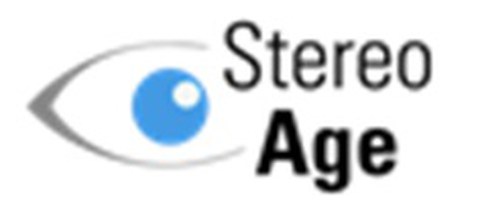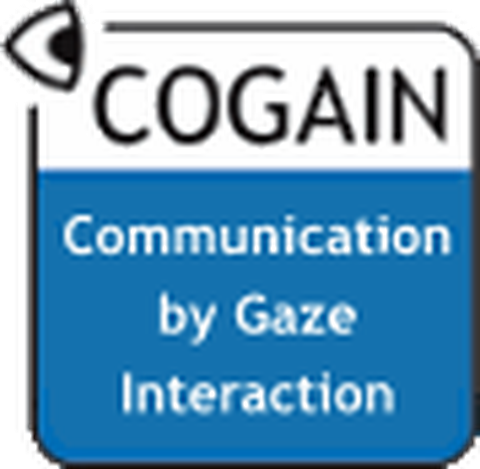Past Projects
[Graduiertenkolleg 2323] Conducive Creating of Cyber-Physic Manufacturing-Systems
The GRK's work deals with designing human-machine cooperation in cyber-physical manufacturing-systems (in German: CPPS)
CPPS consists out of a combination of networked digital (cyber) and physical system components . Its architecture enables to make system changes in short time periods. The therefore resulting flexibility requires new forms of human-technical cooperation.
Hence the GRK wants to contrast the predominant technical-centered approach with a human-centered perspective on how to conceive CPPS.
term: 09/2018 - 02/2023
funded by: DFG
Contact: Sebastian Pannasch
additional information
[KoMMDia] Cooperative human-machine dialogues for fault diagnosis in processing machinery
In processing plants technical faults are inevitable. Their diagnosis requires information about the current plant state as well as operator knowledge and observations. To integrate both sources of information, a promising approach is to use assistance systems (AS) that rely on conversational case-based reasoning: During the dialogue with an operator the AS asks for a problem description step by step, and this description is iteratively refined in a cooperative process. A central challenge is to design dialogues that (1) enable operators to provide the required information, (2) make it possible to transform qualitative operator statements into formats that can be interpreted by machines, and (3) integrate this information with technical data from the plant in ways that foster the emergence and continuous updating of common ground. Current approaches do not sufficiently consider psycholinguistic knowledge about human communication.
In the collaborative research project KoMMDia an AS for cooperative fault diagnosis is developed. When the operator reports a fault to the AS, pattern recognition is used to automatically analyze the current state of the plant, and semantic information processing is used to integrate this information with the information provided by the operator and find similar cases from the past. In a multi-step dialogue the AS asks questions to the operator and asks him to check and adapt its current hypotheses. Over the course of several dialogue episodes the AS learns and gets better at posing relevant questions in a precise nd understandable manner. Thus, the efficiency of fault diagnosis increases. The design of the AS is based on three areas of research: Pattern recognition in multidimensional data sets, case-based reasoning in semantic information spaces, and psycholinguistic research about principles of human communication as well as knowledge elicitation techniques. The psychological part of the project entails the development and testing of design concepts for human-machine dialogues. These concepts are integrated into an AS, tested in the lab, and refined iteratively. Finally, the resulting AS undergoes a summative evaluation during the ongoing production in two chocolate manufacturing companies.
Duration: 11/2017 - 10/2020
Funded by: BMBF
Contact: Romy Müller
[EYELLIS] Eyetracking based survey of quality-of-live in patients with Locked-in-Syndrome
Patients with Locked-in-Syndrome (LIS) are almost fully paralysed and albeit clear consciousness cannot communicate by speech or gestures but often only by the movements of their eyes. Measures of quality of live and wellbeing in patients can therefore be acquired only indirectly and often insufficiently by asking caring relatives or by suggestive questioning. To re-enable and improve communication of LIS-patients, electronic devices that measure and analyse eye movements (so called “eye tracker“) can be employed. Together with a computer and appropriate software it generates a system that LIS-patients can use to communicate. The technology also offers the possibility to develop standardised methods and measure for surveys in LIS patients.
Under the head of Prof. Andreas Herrmann from the Klinik für Neurologie of the Dresden Uniklinikum we have successfully applied for the project "Eyetracking based survey of quality-of-live in patients with Locked-in-Syndrome" (EyeLLIS) funded by the Innovationsfonds. Aim of EYELLIS is to develop and validate standardised, observer-independent, eye tracking based methods for the survey of quality of live and wellbeing as well as the attitudes towards medical treatment and care for LIS patients. These measures will be related to socio-demographic, financial and disease-related parameters in order to identify factors that influence quality of live and wellbeing and the awareness of care related issues in LIS patients. The project will make contributions to improve patients' safety (for instance by changing attitudes towards life-sustaining measures) and to improve the quality of demand orientated care by avoiding over- and undersupply in care.
Duration: 04/2017 - 03/2020
Funded by: Innovationsfonds
Contact: Sven-Thomas Graupner
[PlantCom] Remote communication between field and control room operators
Fault diagnosis in process plants requires cooperative problem solving activities performed by remote partners with complementary roles. While control room operators possess detailed information about the functional parameters of a plant, field operators have direct access to the machines, can detect anomalies by means of sensory perception, and are able to manually make changes to the machines. In case of a technical fault, both sources of information need to be combined to derive and test hypotheses about the source of the fault. In this project, means of technical support for this cooperative process with mobile assistance systems will be conceptualized and tested empirically.
Duration: 2016-2019
Funded by: DFG
Contact: Romy Müller
Verbal, action-based and oculomotor aspects of stereoscopic distance perception
As a result of technological progress, the spread of stereoscopic applications is increasing in many fields such as work, health and entertainment. The eyes of the user are presented with two images from slightly different viewpoints, which results in a 3D-impression. Experimental studies revealed an underestimation of distances and showed large interindividual differences in the spatial perception of stereoscopic content. It is difficult to measure the subjective spatial perception, since verbal reports and action-based estimates often lead to divergent results. The 3D-gaze position measured with a binocular eye-tracking system represents an objective measure of distance perception but has so far been neglected. This project will investigate the relation between different measurement methods of distance perception (verbal reports, action-based estimates, 3D-gaze position) during stereoscopic viewing. The results will allow conclusions about the relationship between various depth cues as well as the internal representation of visual space. Furthermore, an applicable method to adjust stereoscopic visualizations to individual’s depth perception will be tested. This is a pre-condition to develop more naturalistic virtual environments and to reduce errors when interacting with the presented content.
Duration: 2015-2018
Funded by: DFG
Contact: Rebekka Schubert
Investigating the control mechanisms of visual fixation durations by using the distractor effect
The research project wants to investigate the control mechanisms of visual fixation durations by using the distractor effect. The sudden (dis-)appearance of stimuli inhibits saccadic activity temporary, thus leading to a prolongation of the corresponding fixation. This phenomenon is called "distractor effect" and occurs especially for visual stimuli. The effect is largest if the stimuli appear at the gaze point. When participants inspect complex images, the distractor effect is influenced by the attention mode as well as the task instructions. It is smaller when participants focus on layout information than when they focus on object information. Those evidence give rise to the notion, that the fixation prolongation reflects not only the visual processing of the distractor, but also higher cognitive processes. Within this project we want to investigate the influence of different information processes - isolated and in combination - on the fixation prolongation and saccadic inhibition due to presenting distractors. We hope to gain insights in the control mechanisms of visual fixation durations when inspecting complex images.
Duration: 2014-2017
Funded by: DFG
Contact: Johannes Schulz
COSUS - COnsumers in a SUStainable food supply chain
COSUS is a SUSFOOD ERA-net research project under the topic 'Understanding consumer behaviour to encourage a (more) sustainable food choice'. COSUS will run from June 2014 to May 2017 and includes 6 full partners in 5 countries. Consumers are directly and indirectly responsible for wasting a lot of food. In Europe, it is estimated that around 25% of all food that is purchased is being thrown away in the household, that 15% of perishables is wasted before it is sold in grocery stores and that the total waste in the food value chain is on average 180 kg / capita / year. A substantial part of this food waste can be avoided if consumers were willing to accept suboptimal foods: food that deviates in sensory characteristics (odd shapes, discolourations) or that has a best-before date that is approaching or has passed, but is still perfectly fine to eat. Examples of such foods are odd-shaped cucumbers, bread with broken crust, discoloured apples, and yoghurt and cheese past the best-before date. The aim of the COSUS project is to increase consumer acceptance of these suboptimal foods, before and after purchase, by implementing targeted strategies that are based on consumer insights. Within the project, we investigate consumers' attentional deployment towards suboptimal food by the means of eye tracking experiments. We are aiming at deriving new ideas on how to raise awareness on the topic of sustainability in consumers in order to positively influence consumers' purchase decisions. More information: http://cosus.nmbu.no/
Duration: 06/2014-05/2017
Funded by: Bundesanstalt für Landwirtschaft und Ernährung (BLE)
Contact: Jens R. Helmert
StereoAge: Age-specific perception of stereoscopic visualizations
Virtual reality (VR) denotes a computer generated, three-dimensional, interactive environment (Burda & Coiffet, 1996). Number and diversity of VR applications have and will continue to increase in many different areas such as work, downtime and health. As a consequence, people of all age groups come in touch with VR applications. Following human perception in natural environments VR content is usually presented stereoscopically. Meaning, the virtual environment is presented to both eyes from slightly different viewing angles, whereby a three-dimensional impression is created. However, it is known that stereoscopic perception changes with age. Therefore, the research project StereoAge examines the question, to what extend stereoscopic representations in virtual realities can be perceived in a qualitatively comparable fashion by different age groups. Special focus lies on perception of distances. Using relative and absolute measures it is investigated, whether the distance between person and virtual object is perceived differently by young and older people. Especially regarding aspects of demographic change and the change of stereoscopic perception with age, challenges in application of corresponding technologies may arise.
Duration: 02/2015 - 01/2016
Funded by: BMBF
Contact: Josephine Hartwig
IdeJo-Action: Ideomotor Effects in Joint Action - The Influence of Anticipated Partner Reactions on Action Control Processes
Observed actions of a partner can affect a person’s own action control processes, but it is less clear how action is affected by merely anticipated future partner reactions. Is it easier to perform an action when knowing that the partner will respond in a way that matches the action? Ideomotor Theory (Hommel et al., 2001) provides hints that predictable partner reactions are anticipated just like any other form of action effect and result in a facilitation of compatible actions. However, in practice such influences can be somewhat elusive. The present project applies different methods (e.g. reaction time measurement, multi-touch, eyetracking) to investigate the conditions under which the compatibility of anticipated partner reactions affects processes of task selection, action planning and execution. Factors considered include cognitive control requirements as well as the interactivity of the task.
Duration: 10/2014 - 11/2016
Funded by: DFG
Contact: Romy Müller
FAIR - Assistance of Body Functions by Hands- Free Applications In Augmented Reality
Aim of the collaborative research project FAIR is the developement of novel devices and methods for human-machine-interaction. The envisioned interface is a google like system allowing to display information. The control of and interaction with the information display will be implemented by measuring and analysing the users eye movements. By this, the visible elements on the display are not just information, but at the same time provide means for control and interaction with the display. As the user gazes at it, a computer controlled action is initiated. This conept will be implemented in three exemplary scenarios: as assitance and interaction device for users with disabilities, as innovative human-computer-interface for a wide range of entertainment purposes and for maintenance and set-up of equipment in industial areas.
Duration: 11/2012-10/2015
Partner:
Klinik und Poliklinik für Neurologie - Klinikum Carl Gustav Carus
MECOTEC MESS- UND REGELUNGSTECHNIK GMBH
Supported by: BMBF
More Information (in German): link
CogITo (Cognitive Interface Technologies)
Because of technical advancements and innovations especially concerning human-machine-interaction it is more and more essential for computer scientists and psychologists to work together in interdisciplinary teams. This is true in fundamental as well as applied research. To rise to this challenge a group of Early Stage Researchers got together to form Cognitive Interface Technologies (CogITo). The team is made up of eight Early Stage Researchers from the TU Dresden coming from the professorship "Mediengestaltung" of the faculty of informatics and the professorship "Ingenieurpsychologie und Kognitive Ergonomie" of the faculty of math and natural sciences. In the following three years (starting fall 2011) CogITo will research different aspects of human-machine-interaction, e.g. perception in and design of immersive 3D-surroundings, design of and collaboration with virtual agents, different options of directing attention and inducing as well as measuring immersion. CogITo is advanced by the Europäischer Sozialfond and the Freistaat Sachsen.
Duration: 2011-2014
Partner: Chair for Media Design - Technische Universität Dresden
Supported by: Europäischer Sozialfonds Sachsen
Innovative Strategies to Overcome Implicit Product-based and Personality-based Obstacles to Consume Healthy Food
Many people hold quite positive attitudes towards healthy nutrition. However, their eating habits do not always match these explicitly expressed, general attitudes. In fact, explicit attitudes and actual eating behavior often diverge significantly. For this reason, and despite the growing consumer’s awareness of healthy nutrition, the frequency of diet-related (or even diet-induced) diseases is increasing, with obesity and diabetes mellitus type 2 as prominent examples. It is our hypothesis that the attitude-behavior discrepancy can be overcome once implicit associations with nutrition are taken into account. Implicit associations comprise person-based factors, such as lifestyle as well as internal and external product-based factors. The aim of the project is to develop reliable methods for the identification of those consumers whose implicit and explicit attitudes diverge. In contrast to persons with similar implicit and explicit attitudes, this segment of population is regarded as a risk group since their eating habits cannot be influenced by educational campaigns or other conventional prevention methods. In investigating the relevance of implicit obstacles of healthy food consumption, our interdisciplinary approach brings together expertise from the fields of psychology, marketing, food technology, and diabetology. We combined indirect methods like the Implicit Association Tests, eye tracking, and Conjoint Analysis as well as sensory experiments to measure the implicit drivers. Currently, a series of experiments is conducted to examine the potential impact of implicit inhibitors on healthy nutrition with healthy subjects. Subsequently, participants will be recruited by quota sampling from the DIAGEN database which includes information on more than 6,000 persons. Based on the expected findings, specific preventive strategies will be developed to overcome negative implicit attitudes towards healthy eating habits.
Duration: 2010-2013Partner:
TUMAINI - Institut für Präventionsmanagement
Supported by: BMBF
More Information (in German): link
Analysis of man-machine interaction in control stations
For more than 100 years bucket wheel excavators are commonly used for lignite production in open cast mining sites. Since then not only the development of mechanical aspects of these machines but also the modernization of instrumentation and control engineering has progressed. Furthermore, there is a strong tendency to implement automated or semi-automated process- and machine control. Today, much information of the system are supplied to the machine operator supporting his work and assuring safe and accurate operational actions.Aim of the project was the development and testing of methods for a prospective analysis and evaluation of human-machine-interaction in the operator cabin of open cast mining equipment. Special emphasis was put on the question of how the operator can be provided with information particularly relevant for the ongoing task. The motivation for this project was derived from practical issues found in open cast mining sites. These issues can be characterized by enhanced information exchange between the mining equipment, power plants und different mining sites. Furthermore there are dynamic requirements on aspects of quantity and quality of coal production as well as an increasing number of information systems within the mining equipment, resulting from a higher level of technology applied in excavators. Evaluating aspects of human-machine-interaction (machine, mining process, operator’s information processing and behavior) was implemented by using virtual reality and methods of cognitive sciences and applied psychology. We created a “close-to-realistic” virtual simulation of the working conditions in the operator cabin of a bucket wheel excavator as it is used in the open cast mining site of Nochten (Germany) by the Vattenfall Mining AG. This virtual reality scenario was implemented in a Dornier interactive simulator. The configuration served as a virtual lab to investigate issues of human-computer-interaction. It allowed us to manipulate parameters of user-interface design systematically and to study hazard perception, which would hardly be possible in real situations of a mining site. As a unique feature, we used the method of eye tracking to analyze the operator’s eye movements. By this, we were able to study visual information processing and attention during operator’s task behavior.
Duration: 2009-2012
Partner: Chair of Construction Machines and Conveying Technology - Technische Universität Dresden
Supported by: AiF Projekt GmbH
More Information (in German): link
PERCEPT: Perceptual Consciousness – Explication and Testing
PERCEPT pioneers an approach for explicating a person’s subjective interpretation of visual material. This will be achieved through the rendering of “Interpretation Maps” (IM) -- visualisations of a person’s emotional and attentional states coupled with gaze direction and on-line scene analysis. Attention and emotions will be measured using neurophysiological (fMRI, NIRS, EEG/ERP, MEG) and behavioural methods (eye-tracking, recognition of emotion in speech and facial expression). We will introduce new techniques of high temporal resolution (such as eye-fixation-based methods of EFRP and FIBER) to allow free visual exploration and in order to facilitate working with individual subjects. One exemplary problem is the treatment of fixations as indices of attention. We resolve this by selectively linking behavioural analysis to activities of the dorsal and ventral brain pathways. The ventral pathway is hypothesized to drive “attentive fixations” which we consider relevant for IM. Moreover, automated on-line analysis of textures and material will allow us to couple attention and emotion to objects rather than to isolated spatial locations. We will demonstrate PERCEPT’s principles with masterpieces of European art and scientific images. We will also begin to explore the application of IM in medicine, education, geosciences, human-machine interfaces, industrial design and product evaluation.
Duration: 2006-2009Partner:
Universiteit van Amsterdam (Nederland) Jan-Mark Geusebroek
University Medical Center Groning/Rijksuniversiteit Groningen (Nederland) Frans Cornelissen
Aalto University (SUOMI/FINLAND) Riitta Hari
Eötvös Loránd University (Magyarorszag/Hungary) András Lörincz
Universitätsklinikum Bonn (Deutschland) Henrik Walter
Université de Nice Sophia-Antipolis (France) Thierry Baccino
Technical University of Denmark (Denmark) Lars Kai Hansen
Supported by: EU FP6-NEST More Information: link
ZOOM
ZOOM represents an inderdisciplinary research collaboration with with the Fraunhofer Institute for Photonic Microsystems. The project aimed at the development of an intelligent bidirectional see-through display. Based on integrated OLED-on-CMOS chip architecture this new display technology will allow presentation of visual information and enable gaze-based controll of the visual content. In the project we developed applications and evaluated their usability. Therefore, we used a simulation of the bidirectione see-through display in order to allow for a systematic empirical testing of several hardware and software features (temporal resolution, influence of noise, position and size of interactive elements etc.).
Duration: 2006-2008Partner: Fraunhofer Institute for Photonic Microsystems Supported by: BMBFMore Information (in German): link
COGAIN (Communication by Gaze Interaction)
COGAIN is a network of excellence on Communication by Gaze Interaction, supported by the European Commission's IST 6th framework program. COGAIN integrates cutting-edge expertise on interface technologies for the benefit of users with disabilities. The network aims to gather Europe's leading expertise in eye tracking integration with computers in a research project on assistive technologies for citizens with motor impairments. Through the integration of research activities, the network will develop new technologies and systems, improve existing gaze-based interaction techniques, and facilitate the implementation of systems for everyday communication.
Duration: 2004-2009
Partner: 26 European Research Institutions und SMEs, full partner list
Supported by: EU FP6-IST






